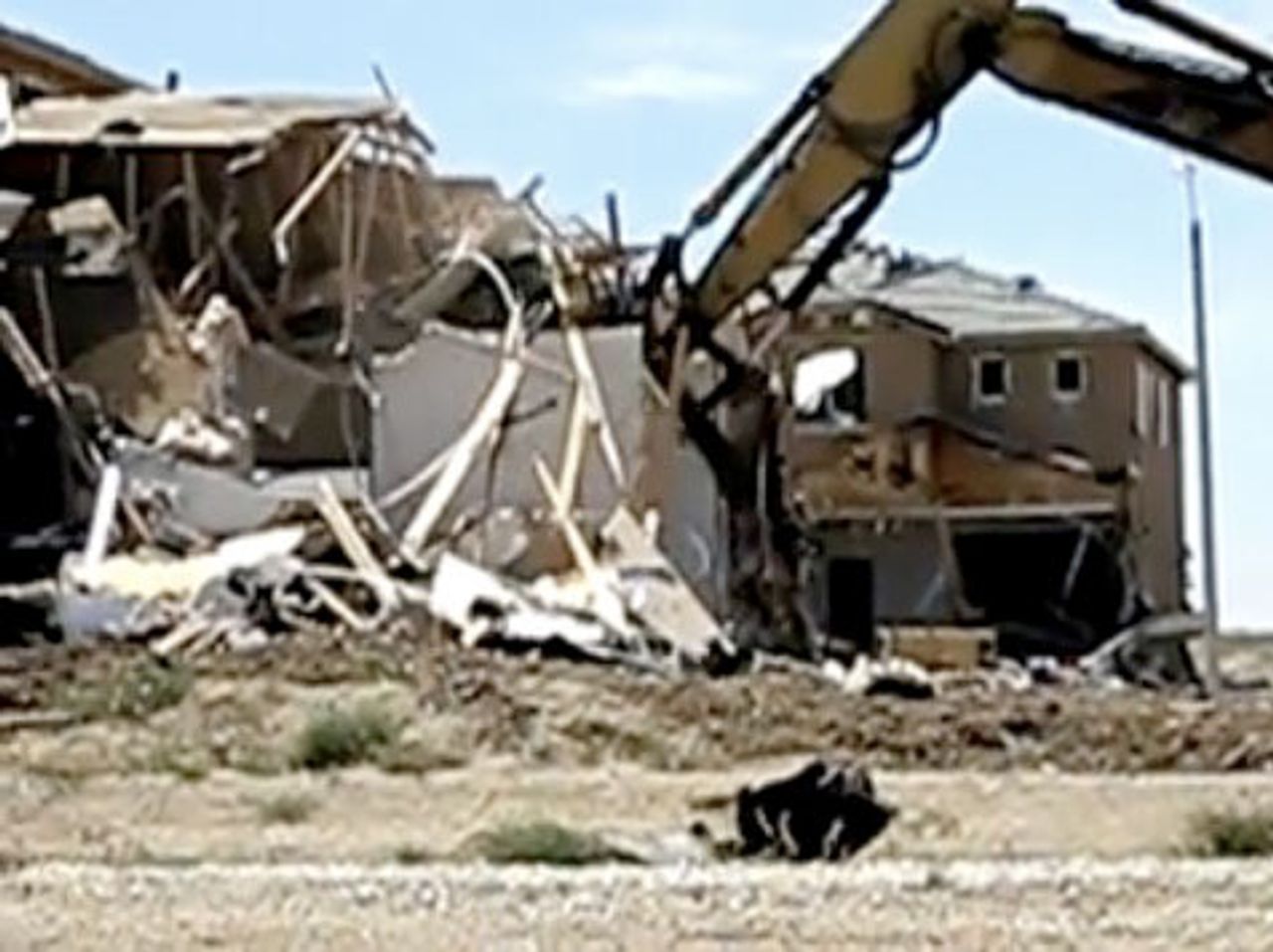 The bank-ordered razing of a new housing development in Victorville, California, highlights the bankruptcy of the profit system under conditions of the deepening recession and growing social misery.
The bank-ordered razing of a new housing development in Victorville, California, highlights the bankruptcy of the profit system under conditions of the deepening recession and growing social misery.
Texas-based Guaranty Bank has decided to have 16 homes destroyed in the desert community because the estimated $1 million cost to complete them was more than it could make selling them. Four of the luxury homes, priced in the $280,000-350,000 range, were already finished, and the others were in various stages of completion. The estimated cost of the demolition was over $100,000.
According to a report in the Los Angeles Times, the median new home price in San Bernardino County, where Victorville is located, is $160,000, down 43 percent in one year. Banks foreclosed on 236,000 homes in California in 2008.
A video of the demolition was broadcast on You Tube. According to the report, the bank has another 20 California homes slated for demolition in Temecula, about an hour and a half to the south.
Work began on the development in 2007, before the full impact of the bursting housing bubble hit Southern California. Construction stopped last summer, and the bank took back the property from the developer in December 2008 through foreclosure.
According to a report in the May 7 Wall Street Journal, thousands of construction projects across the United States lie idle. It cites New York-based Real Analytics Inc., “which estimated that there were 3,929 distressed commercial properties across the US as of March 31—a 55 percent jump since Dec. 31, 2008.”
According to one research firm, some 250 residential developments have been halted in California, comprising over 9,300 homes.
The Journal points to environmental and health concerns over the growing number of abandoned or idle construction sites. In the case of the project demolished in California, Guaranty Bank justified the action on the grounds that it wanted to create a “safe environment” by preventing squatters from taking over the homes.
A spokesman for Guaranty Bank told the San Jose Mercury News, “The current economic environment requires difficult decisions be made by the government, by banks and by individuals. We made the difficult decision to return the site to a safe, clean and undeveloped state keeping in mind the best interests of the community and our shareholders.” The bank indicated that once the demolition is completed the property will be put back on the market.
One Victorville city official defended the bank’s decision, saying, “It just didn’t pencil out for them. They’d have to spend a lot of money to turn around and sell the houses. They just made a financial decision to demolish them.”
The demolition of the houses shocked many. Ron Willemsen, the president of Intravaia Rock and Sand, the company that handled the demolition, told the LA Times, “It’s a waste of a lot of resources and perfectly good construction.”
The federal Office of Thrift Supervision recently cited Guaranty Financial Group, the parent of Guaranty Bank, for “unsafe and unsound banking practices.” It faces a May 21 deadline to improve its capital ratios or face merger or liquidation. Guaranty has loaned large amounts to home developers and has foreclosed on many projects. Regulators are putting pressure on the bank to come up with a plan to dispose of foreclosed properties.
The decision of Guaranty Bank to destroy brand new homes based on economic calculation points to the destructive irrationality of an economic system based on private ownership and production for profit.
It calls to mind the events of the 1930s, when, in the midst of the Depression, the Roosevelt administration had farmers plough under cotton crops, leave fields fallow and slaughter hundreds of thousands of hogs, to artificially raise agricultural prices by decreasing supplies. This under conditions where millions of people were malnourished.
As in the Great Depression, the products of labor are being destroyed as need mounts. Currently there are some 4 million vacant homes in the US, 3 percent of the total housing stock. Yet the number of so-called economic homeless is on the rise across the United States.
A report titled “The New Homeless” on allgov.com notes, “Tent cities and shelters from California to Massachusetts report growing demand from the newly homeless.” The city of Sacramento, California, recently closed down a tent city after it attracted national media attention. In January, the National Alliance to End Homelessness predicted the economic crisis would force 1.5 million people into homelessness over the next two years.
